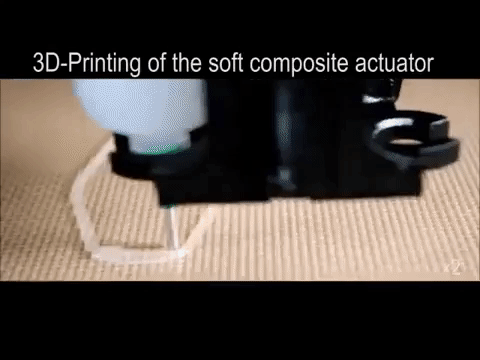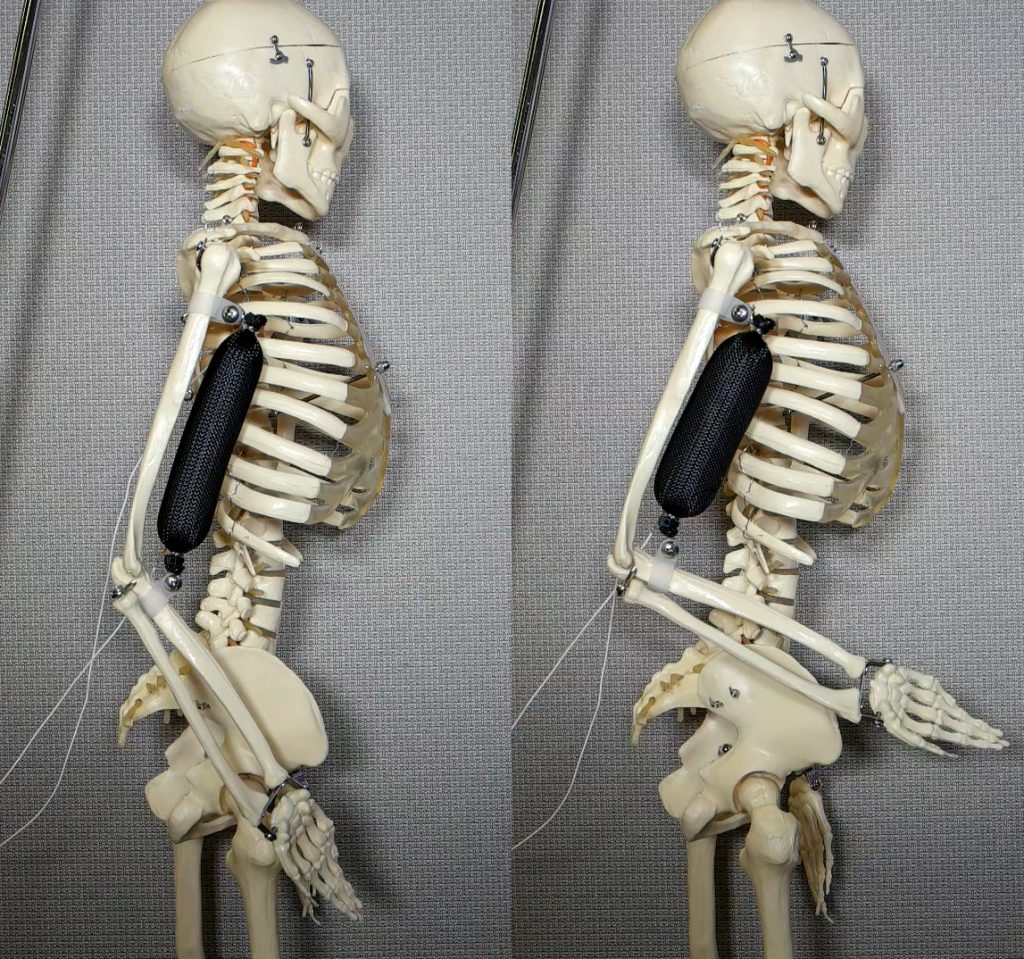Scientists have invented a 3D printed synthetic muscle that can lift up to 1000 times its own weight. In a paper published earlier this week, Aslan Miriyev, Kenneth Stack and Hod Lipson from Columbia University describe an new actuator which mimics the expansion and contraction of human muscle.
The actuator can be attached to a skeletal structure to create a moving bionic body part that can complete simple manual tasks.
A printable elastometer material
The material the scientists used is a “PMSD-based silicone elstometer” that is already used in soft robotic applications, suitable for both 3D printing and casting.

It prepared by mixing 20% ethanol with silicone elastomer. The ethanol remains suspended in bubbles throughout the silicone rubber matrix and functions as an active fluid. Once an electric voltage is fed through the silicone, the ethanol boils when reaching its liquid–gas transition temperature. The material thus increases in volume, leading to significant expansion, and contraction once it condenses back into ethanol.
To print the muscle, the paper outlines that an in-house desktop 3D printer, capable of printing two materials at once was used. A maximum resolution of 0.8 mm was achieved using 20 gauge syringe tip. Additionally the scientists used a range of commercial 3D printers including hardware from Stratasys, Ultimaker and uPrint.

Printing muscle
The advantages of the 3D printed muscle are outlined in the paper. “It combines a high strain (up to 900%) and correspondingly high stress (up to 1.3 MPa) with low density (0.84 g cm3)”. While Miriyev notes that it is “the closest artificial material equivalent we have to a natural muscle,” its strain density (expansion per gram) is 15 times larger than organic muscle, providing it with the extreme potential to lift masses beyond the capability of humans.

Commenting on the findings, Prof. Lipson, who has researched extensively on artificial intelligence and robotics, commented that “This is a big piece of the puzzle and, like biology, the new actuator can be shaped and reshaped a thousand ways. We’ve overcome one of the final barriers to making lifelike robots.”
For more on 3D printing and robotics, subscribe to our free newsletter, and follow us on Facebook and Twitter.
Our featured image shows the actuator being demonstrated. Video via Columbia University, GIF via R. Haria.


